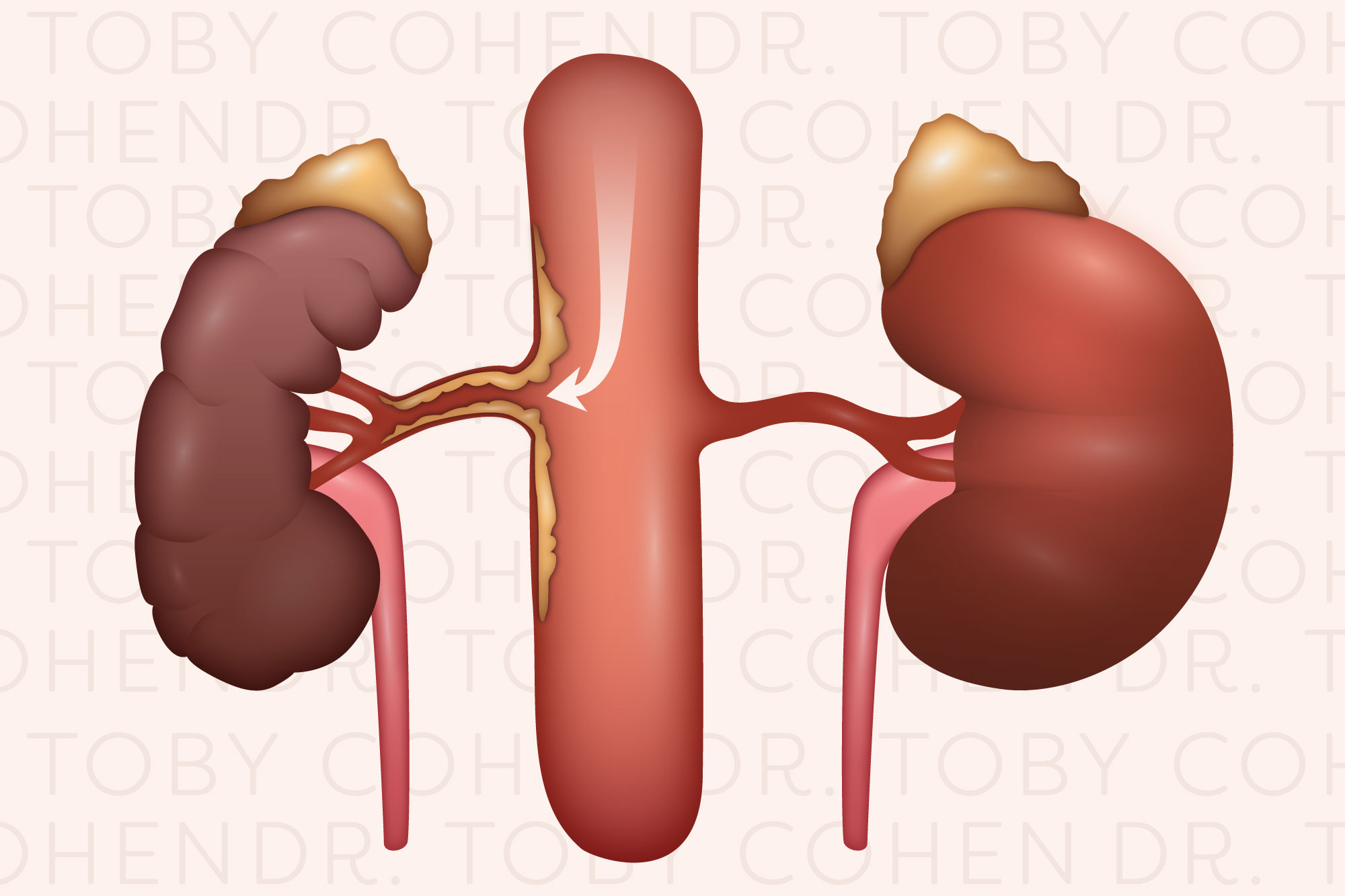Enquire Now
Fill out the form below and we will get back to you as soon as we can.


The renal and visceral arteries are vessels going to the kidney (renal), liver, spleen or bowel (visceral). Disease can occur when one of these arteries becomes narrowed, also known as stenosis, or forms an aneurysm.
Stenosis is usually due to a build-up of plaque which occurs at junction points where there is turbulent blood flow. Not all cases of this need to be treated, only those that significantly impair the flow of blood resulting in symptoms. The most common way to treat this is by stenting via the groin or in some cases, creating an open surgical bypass.
Aneurysm in the renal or visceral arteries is due to a weakening in the wall. When the aneurysm grows to a size of 2cm or more, surgical treatment will be recommended. Aneurysms are slow growing and are often picked up incidentally on a routine scan. The vast majority of these can be treated endovascularly with either stents or coils. Rarely is a bypass needed to divert blood away from the area.
Most stenosis’ are asymptomatic and don’t cause any problems. If symptoms do appear, they will be dependent on the organ that the vessel supplies. If it’s the coeliac artery, symptoms may include pain after eating. If it’s the superior mesenteric artery, or SMA, symptoms may include pain after eating and weight loss. If it’s the renal artery, symptoms can include high blood pressure and in some cases, build-up of fluid in the lungs.
This list is not exhaustive and Doctor Cohen will work with you to determine whether treatment can be managed conservatively, or via surgical intervention.


When diagnosing renal or visceral disease, the primary approach will be through discussing your clinical history. This will then be supported by radiological imaging such as ultrasound and computed tomography (CT).
There are many treatment options available for renal and visceral artery disease. The most appropriate treatment will be tailored to your specific situation and will be discussed between yourself and Doctor Cohen. Some treatment options are noted below. You will require a referral from your GP or treading practitioner before you visit Dr Cohen.
The mainstay of treatment for stenosis is risk factor control, including ensuring your blood pressure is optimised, your cholesterol is managed, and you stop smoking.
If this approach fails, the most likely course of action will be stenting. This will involve a small incision being made in the groin or arm, depending on the vessel being treated. A stent will be deployed pushing the plaque against the artery wall, allowing for improved blood flow. This surgery will take around one hour and you’ll be able to go home the following day.
If the aneurysm grows over 2cms, surgical treatment will be recommended. This will involve a small incision being made in the groin or arm, depending on the vessel. The weakened wall of the artery will be excluded with a covered stent that will direct blood away from the wall or a combination of stenting and coils. The surgery will take around one hour and you’ll be able to go home the following day.